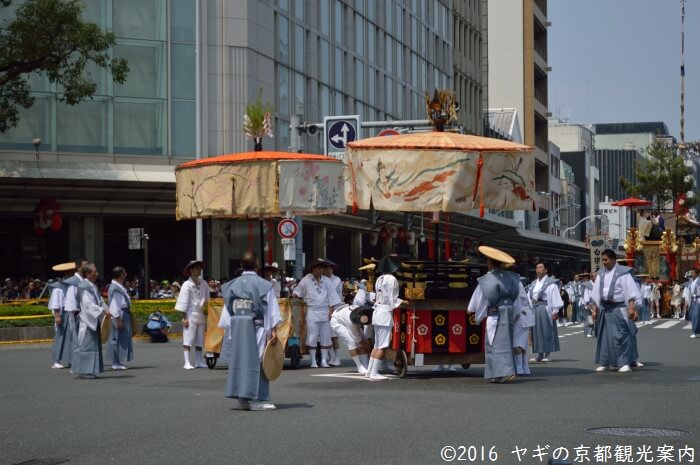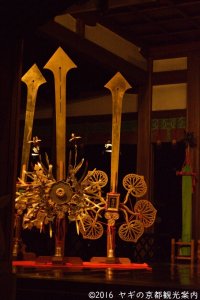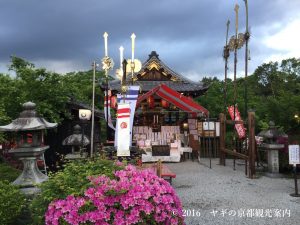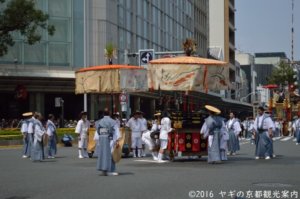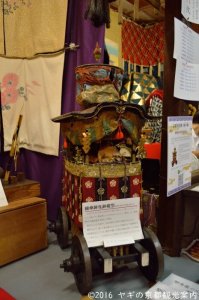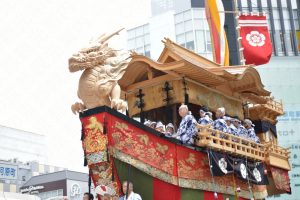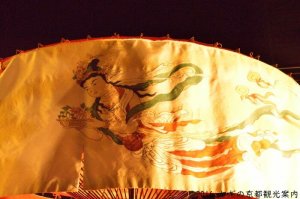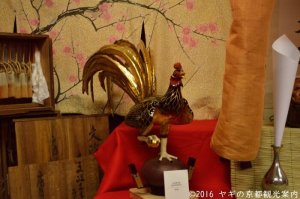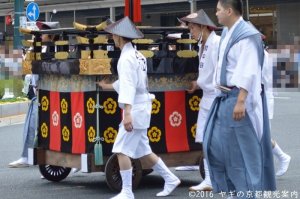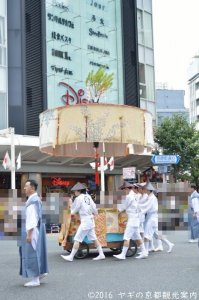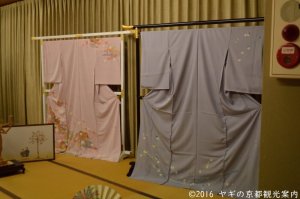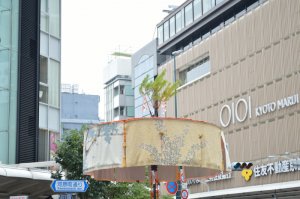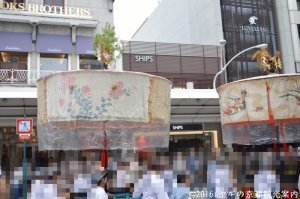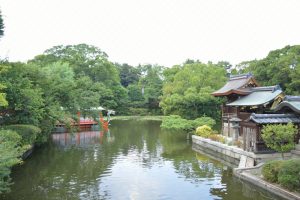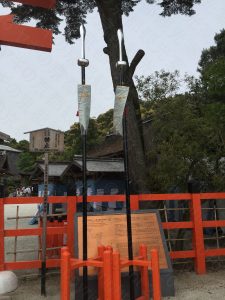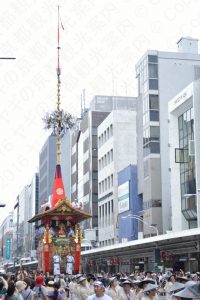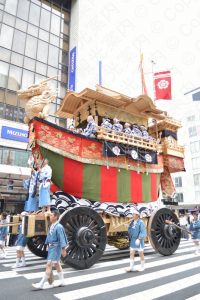Overview 概説
Ayagasahoko, or sometimes pronounced Ayagasaboko in colloquial way, is one of the Yamahoko floats participate in Yamahoko Junko parade in Gion matsuri festival.
Sometimes, Ayagasahoko is referred as “the primitive form” of Yamahoko float. Let us learn about the history of Ayagasahoko and Gion matsri and explore what the expression means.
A short history of Ayakasahoko 綾傘鉾の歴史
Yamahoko float has four kinds; Hoko, Yatai, Kasahoko, Hikiyama, and Kakiyama. Ayagasahoko is Kasahoko. Kasahoko is a hoko which has umbrella.
In Gion matsuri, people bring Deity(s) on the portable shrine(s) to Kyoto city and ask them to get rid of evil spirits which gathered around hoko. Throughout 1149 years, hoko plays a role to gather evil spirits a.k.a Ekishin(Deity who brings us malady). If you can’t understand evil spirit, imagine something like phantom. Hoko is a kind of arms used in ancient times and also used in ritual as Yorishiro(依代) which Ekishin descend to. This is the origin of Yaomahoko float in Gion matsuri. Take a look at the photo above. They are hoko-heads. They look like swords and have ornaments resemble leafs. The leafs are baits: they glitter to catch Ekishin.
At the beginning, people stood hoko like this. As years go by, they hold them by the hand and stroll around the ancient Kyoto city. They developed these hoko into four kinds of Yamahoko.
At least in early 15th century, Ayagasahoko was in the same form as we can see today. Around the 16th century, merchants in Kyoto gained prosperity and went into their heyday. They belonged to Za(座), something like guild in the West. These Za are under the control of Gion-sya, the present-day Yasaka shrine. They developed hoko into Yamahoko floats as a gratitude for Gion-sya which gave them permission and privilage to their business.
Ayagasahoko was not an exception. In 1834, they built Hikiyama(曳山) but it was caught by huge fire and went into debris in 1864.
The fire is called Genji no taika(元治の大火). It was so enormous that it burnt out a half of Kyoto city. Many Yamaboko suffered its damage. For example, Ofunahoko was seriously wrecked by the fire and it took fifteen decades for it to come back to Yamahoko parade. After the incident it is believed that Ayagasahoko went back to the form it used be.
The architecture of Ayakasahoko 綾傘鉾の構造
Umbrellas 傘
The word “Ayagasahoko” is devided into 3 words; “Aya,” “Kasa,” ans “Hoko.” Aya means “on the Ayanokoji street.” Kasa is a word stands for Umbrella in Japanese. Hoko reveals that it is a developed form of the ancient hoko. Ayagasahoko consists of two Kasa.
One is this. A wheeled-box has an umbrella. The persons on it are Hiten(飛天) who praise the Buddhism. They are based on the picture of Hiten in Hokaiji temple in Kyoto.
On the top of the umbrella, there is a figurine of chicken which holds a golden egg. It is a Goshintai(御神体). Goshintai has the same role as Yorishiro. Yamahoko usually has Goshintai. For example, Kita kannnon yama has a statue of Buddhist Deity. In the case of Yamahoko, Deity who saves us descends to Goshintai. On the other hand, Deity who brings us disasters descends to Yamahoko itself. It might sound strange that a Deity who harm us and save us descend to the same thing.
The wheeled-box is wrapped in sheets of cloth. They escaped narrowly the Genji no taika in 1864.
The other is this. The umbrella is made of Yuzen(友禅) designed by Moriguchi Kako(森口華弘), a Yuzen artist listed as Living National Treasure of Japan.
Yuzen is hand-made dyeing technique for fabrics.
The umbrella has four sheets of Yuzen. The plants painted on them tell us four seasons.
Bofuri hayashi 棒振り囃子
The peculiar thing on Ayagasahoko is Bofurihayashi. Hayashi is music played in Japanese festival to cheer it up. Hayashi of Ayakasahoko has dance performance. We have exact idea when it began but we can find it in Yamahoko parade at least in the 17th century.
The performers leads Ayagasahoko in Yamahoko parade. In Yoiyama nights, we can enjoy Bofurihayashi near Ayakasahoko, too. On the very day of the parade, they dance with mask on.
Chigo お稚児さん
Ayakasa hoko is also led by Chigo(稚児). Chigo is a child who serves for Gion matsuri. Chigo visits Yasaka shrine prior to Yamahoko parade to pray for the success of Gion matsuri.
What is Gion matsuri festival? 祇園祭とは?
The history of Gion matsturi festival dates back to 869. At that time in Kyoto, many people suffered smallpox, dysentery, and other epidemics because of hot and damp whether and ill-prepared water supply. In addtition to it, whole Japan saw natural disasters like earthquake and tsunami and suffered huge expansion of maladies.
In those days, people thought evil spirit causes epidemics and natural disasters. The imperial court gave a priest of Gion-sya an order to hold Goryo-e (御霊会), the ritual to calm down evil spirit at Shinsen-en (神泉苑), the largest pond in ancient Kyoto. (The picture above.).
He put the spirit of Gozu-tenno, the Buddhist Deity, into one of three portable shrines and sent them from Gion-sya to Shinsen-en and placed 66 hoko (矛) there (We don’t have exact idea of their appearance but I suppose they looked like these hoko in the picutre above). His aim is to put the evil spirits together and have them descended to the hokos and ask Gozu-tenno to get rid of them.
This ritual is called Gion-goryo-e, the origin of Gion matsuri festival. In the begging, the Goryo-e was held when epidemics expanded, and became annual event in 970. Since then, the festival was carried on for 1000 years despite of incessant interruption.
The hokos in Gion goryo-e developed into Yamahokos/Yamabokos (山鉾). At the first time, people held hokos by the hand. In Muromachi period (1336 – 1573), they are on the carriage called Hokosya (鉾車). At the end of the period, the hokosya began to be decorated with ornaments as Yamahoko of these days. Yamahoko was decided to be registered as UNESCO Intangible Cultural Heritage on last November.


